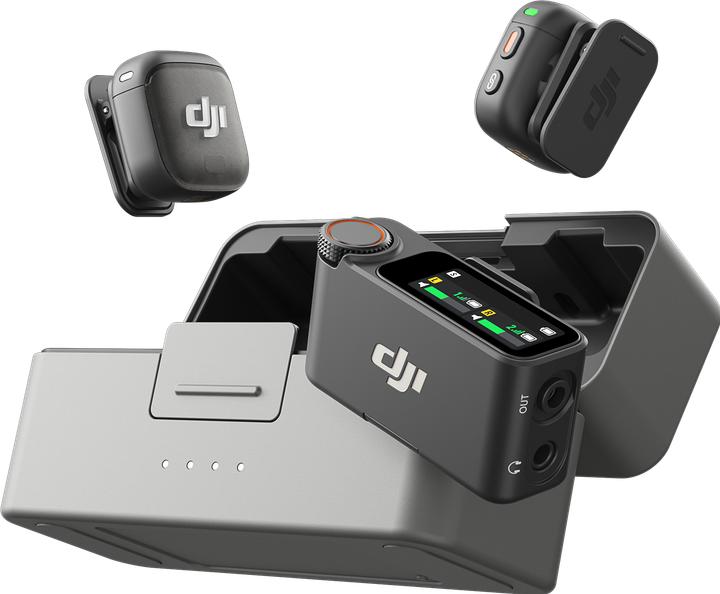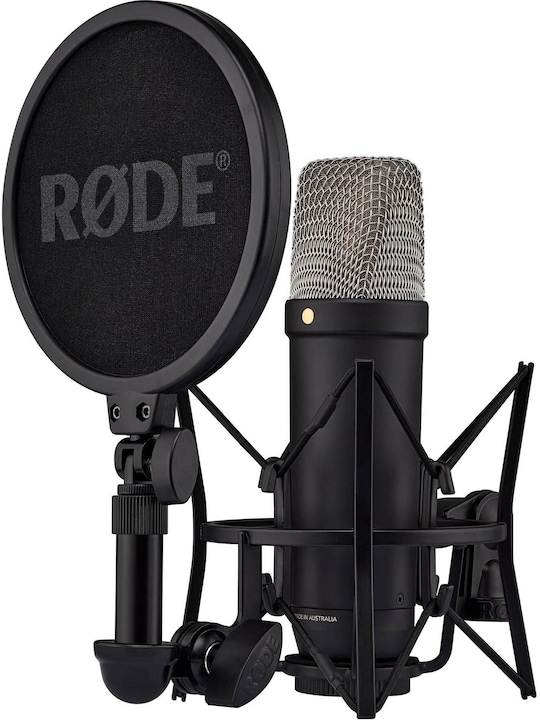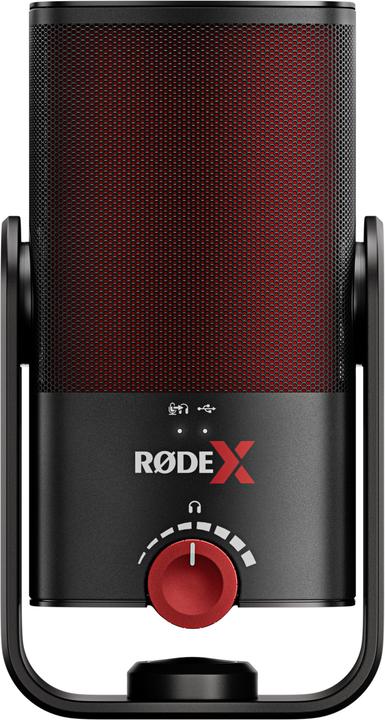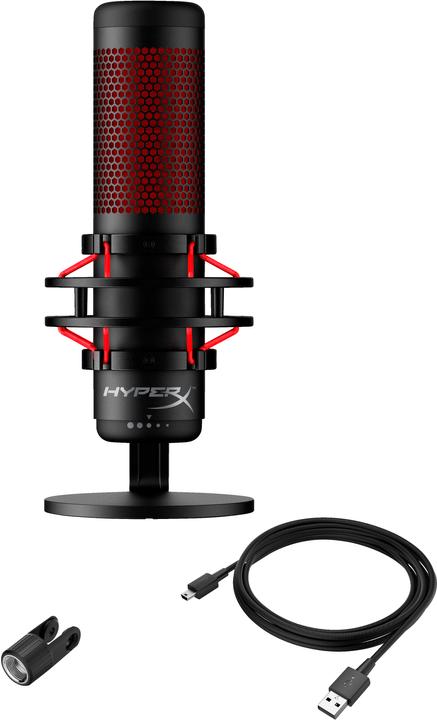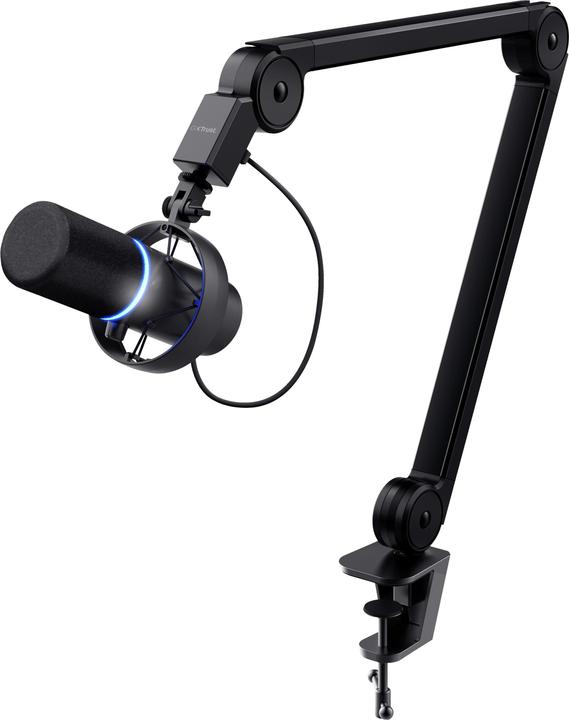
Too Many Microphones? How to Choose the Right One
Discover five essential factors to consider when selecting the perfect microphone for your needs.
Last updated 2 days ago. Automatically generated content.


Select options and limit the number of products
Microphone type determines the microphone's design and application, influencing its suitability for different recording or performance environments. Choosing the right type enhances audio quality and ensures optimal functionality for specific needs, whether for broadcasting, live performances, or studio recording.
Popular options (you can select more than one)
Lavalier microphone
Typical price
43,– to 170,–Compact and discreet, designed to be clipped onto clothing for hands-free use.
Ideal for presentations or interviews, allowing clear sound pickup while leaving the user free to move.
Bestseller
Wireless microphone
Typical price
120,– to 300,–Operates without physical cables, offering freedom of movement during performances.
Perfect for stage use, where performers require mobility without sacrificing audio quality.
Bestseller
Studio microphone
Typical price
89,– to 360,–Engineered for high-fidelity sound capture, suitable for controlled environments.
Best for studio recordings, providing detailed and accurate audio reproduction for professional projects.
Bestseller
Vocal microphone (live)
Typical price
64,– to 340,–Built to withstand the rigors of live performances, with features to reduce feedback.
Ideal for singers and musicians performing live, offering reliable sound quality and durability.
Bestseller
Microphone application refers to the intended use or environment where the microphone will be utilized, influencing its design and features. Choosing the correct application type ensures optimal sound quality and performance for specific settings, enhancing the overall audio experience.
Popular options (you can select more than one)
Studio
Typical price
110,– to 360,–Designed for controlled environments, offering high sensitivity and accurate sound reproduction.
Ideal for recording music, vocals, and instruments, providing clarity and detail in sound capture.
Bestseller
Videography
Typical price
80,– to 240,–Equipped with directional capabilities to focus on sound from specific sources, reducing background noise.
Perfect for filming, capturing clear audio in dynamic settings, enhancing the visual production quality.
Bestseller
Podcasting
Typical price
80,– to 260,–Offers excellent vocal clarity with low noise levels for spoken word content.
Great for recording interviews and discussions, ensuring professional audio quality for listeners.
Bestseller
Live
Typical price
89,– to 370,–Built for robust sound capture in dynamic environments, minimizing feedback and distortion.
Suited for concerts and public speaking, providing reliable performance and clear sound delivery.
Bestseller
Audio outputs on microphones determine how the audio signal is transmitted from the device to other equipment, impacting compatibility and sound quality. Choosing the right output is crucial for ensuring seamless integration with your existing audio setup and achieving optimal sound performance.
Popular options (you can select more than one)
XLR
Typical price
120,– to 360,–Provides a balanced and professional audio signal, often used in studio and live environments.
Ideal for high-quality sound capture, reducing noise and interference, making it suitable for professional recording and broadcasting.
Bestseller
USB
Typical price
48,– to 120,–Offers direct digital connection to computers, simplifying setup without needing additional hardware.
Perfect for podcasting or streaming, providing ease of use and compatibility with most modern devices.
Bestseller
3.5mm analogue jack
Typical price
43,– to 190,–Standard audio connector commonly used in consumer electronics, offering easy connectivity.
Suitable for casual use with computers and mobile devices, providing versatility for everyday applications.
Bestseller
6.3mm jack
Typical price
64,– to 340,–Larger analogue connector used in professional audio equipment, delivering robust signal quality.
Recommended for musicians and audio professionals requiring reliable connectivity with amplifiers and mixers.
Bestseller

Psso Set WISE ONE + Dyn. radio microphone 823-832/863-865MHz
Signal transmission in microphones determines how audio signals are conveyed from the mic to the receiver or recording device. It is a crucial factor affecting the reliability, freedom of movement, and overall sound quality during performances or recordings.
Popular options (you can select more than one)
Cable
Relies on physical cables to transmit audio signals directly from the microphone to the connected device.
Offers consistent and reliable signal quality, making it ideal for studio recordings and situations where interference might be a concern.
Bestseller
Wireless
Transmits audio signals via radio frequencies, eliminating the need for physical cables.
Provides greater mobility and flexibility, making it suitable for live performances and dynamic environments where movement is essential.
Bestseller
The brand factor plays a crucial role in microphone purchase decisions as it often reflects quality, durability, and technological innovation. Recognized brands like RØDE, Shure, and HyperX offer a variety of microphones tailored for different needs, from professional studio recording to gaming and streaming.
Popular brands (you can select more than one)
RØDE
Known for high-quality microphones catering to professional audio recording and broadcasting.
Offers exceptional clarity and durability, making it a popular choice for podcasters and content creators.
Bestseller
HyperX
Specializes in gaming and streaming microphones that provide immersive audio experiences.
Provides user-friendly features and affordability, ideal for gamers and streamers seeking reliable performance.
Bestseller
Trust
Offers budget-friendly microphones suitable for everyday use and casual recording needs.
Great value for money, appealing to those seeking basic functionality without compromising on sound quality.
Bestseller
DJI
Renowned for innovative audio solutions integrated with video recording equipment.
Perfect for creators looking to capture high-quality sound alongside their video projects.
Bestseller
Shure
A leader in professional-grade microphones used in studios and live performances worldwide.
Known for robust build quality and superior sound, trusted by musicians and audio engineers.
Bestseller
